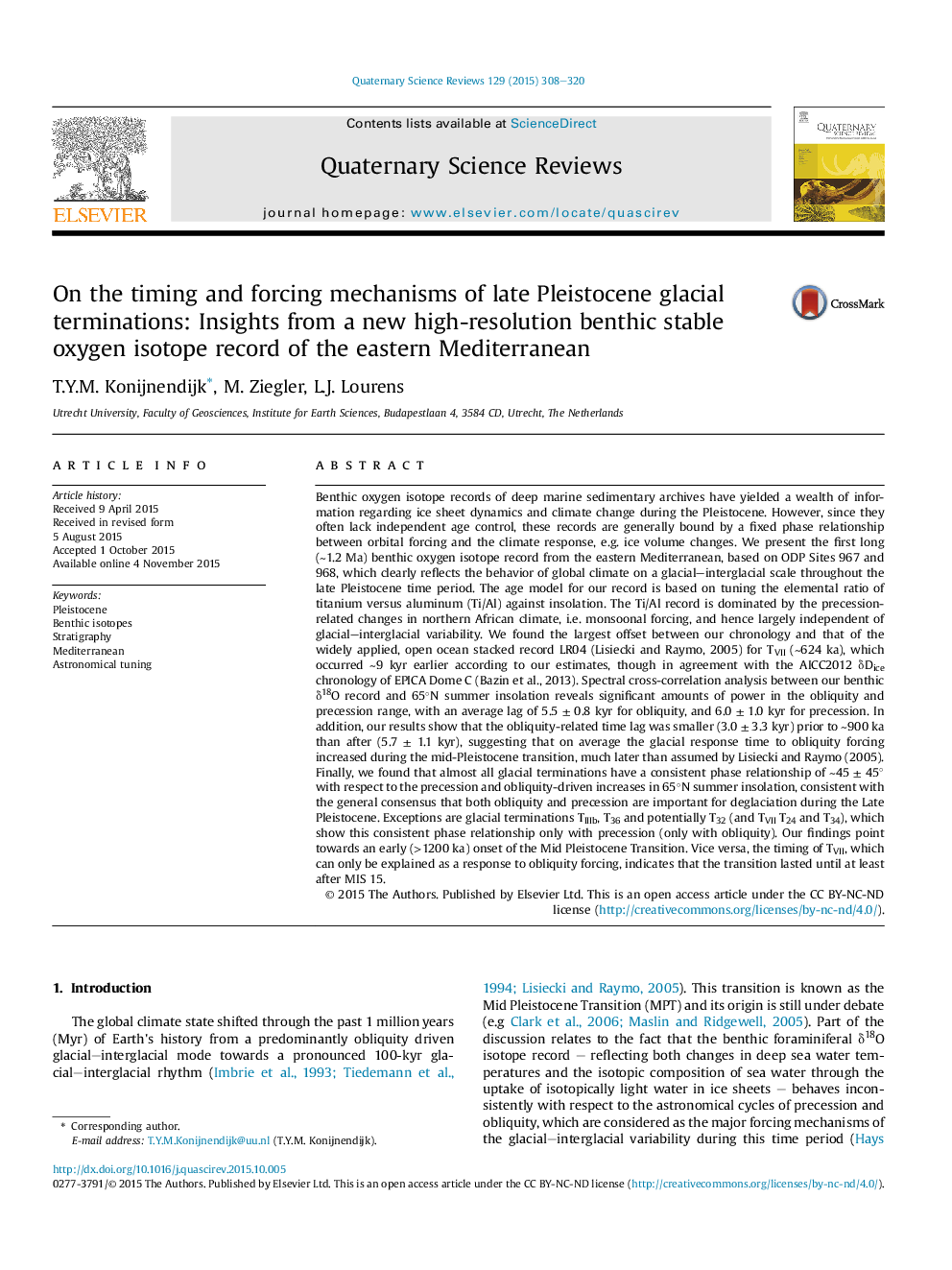| Article ID | Journal | Published Year | Pages | File Type |
|---|---|---|---|---|
| 6446677 | Quaternary Science Reviews | 2015 | 13 Pages |
Abstract
Benthic oxygen isotope records of deep marine sedimentary archives have yielded a wealth of information regarding ice sheet dynamics and climate change during the Pleistocene. However, since they often lack independent age control, these records are generally bound by a fixed phase relationship between orbital forcing and the climate response, e.g. ice volume changes. We present the first long (â¼1.2 Ma) benthic oxygen isotope record from the eastern Mediterranean, based on ODP Sites 967 and 968, which clearly reflects the behavior of global climate on a glacial-interglacial scale throughout the late Pleistocene time period. The age model for our record is based on tuning the elemental ratio of titanium versus aluminum (Ti/Al) against insolation. The Ti/Al record is dominated by the precession-related changes in northern African climate, i.e. monsoonal forcing, and hence largely independent of glacial-interglacial variability. We found the largest offset between our chronology and that of the widely applied, open ocean stacked record LR04 (Lisiecki and Raymo, 2005) for TVII (â¼624 ka), which occurred â¼9 kyr earlier according to our estimates, though in agreement with the AICC2012 δDice chronology of EPICA Dome C (Bazin et al., 2013). Spectral cross-correlation analysis between our benthic δ18O record and 65°N summer insolation reveals significant amounts of power in the obliquity and precession range, with an average lag of 5.5 ± 0.8 kyr for obliquity, and 6.0 ± 1.0 kyr for precession. In addition, our results show that the obliquity-related time lag was smaller (3.0 ± 3.3 kyr) prior to â¼900 ka than after (5.7 ± 1.1 kyr), suggesting that on average the glacial response time to obliquity forcing increased during the mid-Pleistocene transition, much later than assumed by Lisiecki and Raymo (2005). Finally, we found that almost all glacial terminations have a consistent phase relationship of â¼45 ± 45° with respect to the precession and obliquity-driven increases in 65°N summer insolation, consistent with the general consensus that both obliquity and precession are important for deglaciation during the Late Pleistocene. Exceptions are glacial terminations TIIIb, T36 and potentially T32 (and TVII T24 and T34), which show this consistent phase relationship only with precession (only with obliquity). Our findings point towards an early (>1200 ka) onset of the Mid Pleistocene Transition. Vice versa, the timing of TVII, which can only be explained as a response to obliquity forcing, indicates that the transition lasted until at least after MIS 15.
Related Topics
Physical Sciences and Engineering
Earth and Planetary Sciences
Geology
Authors
T.Y.M. Konijnendijk, M. Ziegler, L.J. Lourens,
